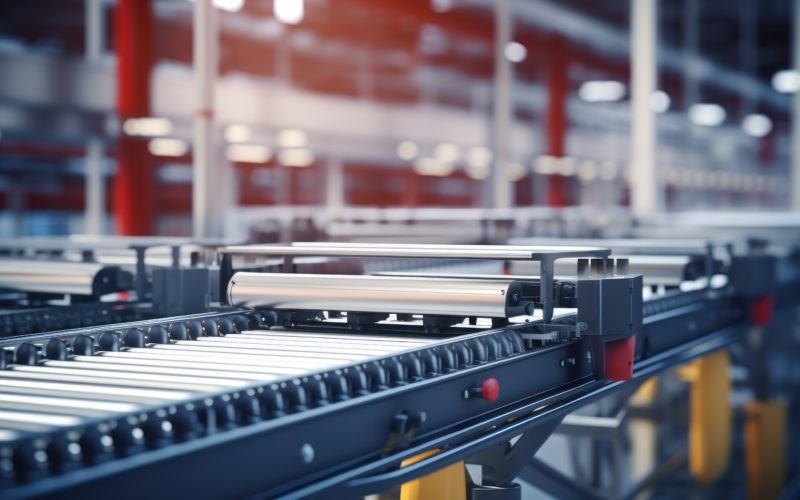One of the biggest challenges in production and warehouse systems is maintaining efficient product movement. If your operation depends heavily on manual labor or outdated technology, delays, bottlenecks, and rising costs are inevitable. This is why conveyors are widely regarded as a smart and efficient method of product transport.
A well-designed conveyor system does more than move products from point A to point B—it streamlines operations, reduces physical strain on employees, and enables your team to focus on higher-value tasks. From small components to heavy materials and finished goods, there’s always a scalable, reliable conveyor solution to get the job done efficiently. Conveyors help minimize errors, accelerate workflows, and improve safety.
This article explores what conveyors are, how they’re used across industries, and why they are critical assets in modern business operations.
What are Conveyors?
Conveyors are mechanical systems designed to transport materials efficiently from one location to another along a predetermined path. Available in various types — such as belt, roller, overhead, and automated guided systems — they all share a core function: continuous material transport.
Like modular or flat belt systems, conveyors employ a motor-powered continuous loop to transport products over short or long distances. Depending on your process and layout needs, they can move in straight lines, curves, inclines, or declines.
Many conveyors integrate advanced features like sensors, timers, or robotic arms to automate tasks beyond basic transport. When paired with automation systems, they enhance speed, accuracy, and control in operations.
In modern industries like manufacturing, logistics, and warehousing, conveyors are vital tools. Once installed, they perform repetitive tasks reliably, reducing the need for manual labor and minimizing errors or downtime.
The following sections explore common applications of conveyor systems.

Uses of Conveyors in Different Sectors
Conveyors are versatile and have uses in almost every industry where physical products come into play.
In manufacturing environments, conveyors are the lifeblood of production. They move car parts in automotive factories and circuit boards in electronics plants, delivering components precisely where and when needed. They ensure a steady flow that aids lean manufacturing and just-in-time stock methods.
1. Warehousing and Logistics
In warehouses and fulfillment centers, conveyors help sort, route, and transfer packages between key areas such as shipping, packing, and picking. Integrated systems often include barcode scanners and sortation units to ensure accurate and timely deliveries.
2. Food and Pharmaceutical Processing
Hygiene and consistency are non-negotiable in these industries. Conveyors made of stainless steel with antimicrobial coating ensure hygienic product handling, preventing contamination. These systems also transport delicate items, such as produce, baked goods, or medical containers, with precision and efficiency.
3. Recycling and Waste Management
Even in the waste sector, conveyors optimize the removal and sorting of recoverable products. They replace sortation by hand with more efficient, safer methods with high capacities and minimal handling. Across industries, conveyors are designed to handle variations in weight, speed, hygiene, and complexity with precision.
Benefits of Using Conveyors for Goods Transfer
1. Remove Repetitive Lifting and Transport
Manually transporting goods between stations wastes valuable time and energy. Conveyor systems automate these tasks, allowing employees to focus on higher-value activities like quality control, machine setup, or customer service. By minimizing unnecessary movement, conveyors significantly shorten production times.
2. Enhance Speed and Throughput
Conveyor systems provide a continuous flow of goods, ensuring consistent and predictable operations. This reliability helps companies plan efficiently, meet deadlines, and manage peak demand. Because they can operate continuously, conveyors boost production capacity without increasing labor costs.
3. Improve Workplace Safety
Lifting and carrying heavy loads often lead to workplace injuries, especially during long shifts. Conveyors eliminate much of this physical strain, reducing injuries, downtime, and insurance costs. Modern conveyor systems include safety features like emergency stops, side guards, and overload protection to protect both workers and products.
4. Ensure Product Consistency
Manual handling increases the risk of damage, especially for fragile or precision products. Conveyors transport goods with steady motion, minimizing jostling and breakage. This is particularly valuable in industries like packaging or electronics, where even minor damage can compromise the final product.
5. Scale with Your Business Growth
Conveyor systems scale easily with business needs. As production volumes increase, companies can extend conveyor lines, add new features, or automate additional processes. Unlike manual systems, which are limited by labor availability, conveyors enable expansion without significantly increasing overhead costs.
Wrapping Up
Conveyors are not merely rolling belts or rollers. They are intelligent, adaptable tools that allow you to transport products more efficiently, safely, and quickly. They are used across manufacturing, logistics, and food processing to minimize waste, increase speed, and enhance accuracy.
Rather than relying on manual labor, your business can adopt an automated system that runs continuously, without fatigue or delays. The result? Higher productivity, safer workplaces, better employee morale, and increased customer satisfaction.












